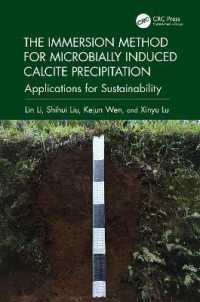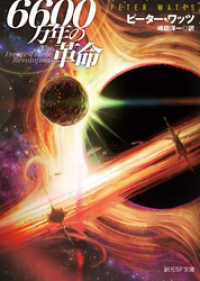- ホーム
- > 洋書
- > ドイツ書
- > Humanities, Arts & Music
- > Music
- > musical equipment
Description
(Text)
Der epochale Klaviervirtuose Liszt verfasste für sein Instrument zahllose Transkriptionen von Werken anderer Komponisten - Wagners Tristan und Isolde als Schlüsselwerk des 19. Jahrhunderts gehörte natürlich dazu. Seiner kongenialen Übertragung der berühmten Schluss-Szene ("Mild und leise, wie er lächelt") auf das Klavier verdanken wir im Übrigen auch den heute geläufigen Titel "Isoldens Liebestod" - Wagner selbst sprach noch von Isoldes "Verklärung". Den raffinierten - aber nicht unspielbar schweren - Klaviersatz Liszts bringen wir in bester Urtext-Qualität, inklusive des originalen Fingersatzes des Tasten-Meisters. Im Anhang unserer Ausgabe ist zudem der Gesangstext dieser finalen Szene des Dramas abgedruckt.
(Table of content)
Isoldens Liebestod aus "Tristan und Isolde" (Richard Wagner) Isoldens Liebestod aus "Tristan und Isolde" (Richard Wagner)
(Text)
The epochal piano virtuoso Liszt made numerous transcriptions for his instrument of works by other composers - Wagner's Tristan und Isolde, a key nineteenth century work, naturally numbered amongst them.
His congenial rendition of the famous closing scene ("Mild und leise, wie er lächelt") for the piano is, incidentally, the source of the title that we are so familiar with today, "Isoldens Liebestod" (Isolde's Love Death) - Wagner himself only spoke of Isolde's "transfiguration". We are now publishing Liszt's sophisticated - but not impossibly difficult - piano setting in the finest Urtext quality, including the original fingerings by the master of the piano. The text of this final scene can be found in an appendix to our edition.
(Table of content)
Isoldens Liebestod from "Tristan und Isolde" (Richard Wagner) Isoldens Liebestod from "Tristan und Isolde" (Richard Wagner)
Liszt, l'un des plus grands pianistes virtuoses de son temps, transcrivit un nombre impressionnant d'oeuvres d'autres compositeurs pour son instrument de prédilection - oeuvre clé du XIXe siècle, le Tristan et Isolde de Wagner en fit tout naturellement partie. C'est de sa géniale transcription pour piano de la célèbre scène finale («Mild und leise, wie er lächelt») que provient par ailleurs le titre communément employé aujourd'hui de «Mort d'Isolde» - Wagner parlait encore de «transfiguration» d'Isolde. Nous présentons ce morceau raffiné, mais pas d''une difficulté insurmontable, dans une édition Urtext de la meilleure qualité, incluant les doigtés originaux du maître du clavier. Le texte chanté de cette scène finale du drame est par ailleurs reproduit en annexe à notre édition.








